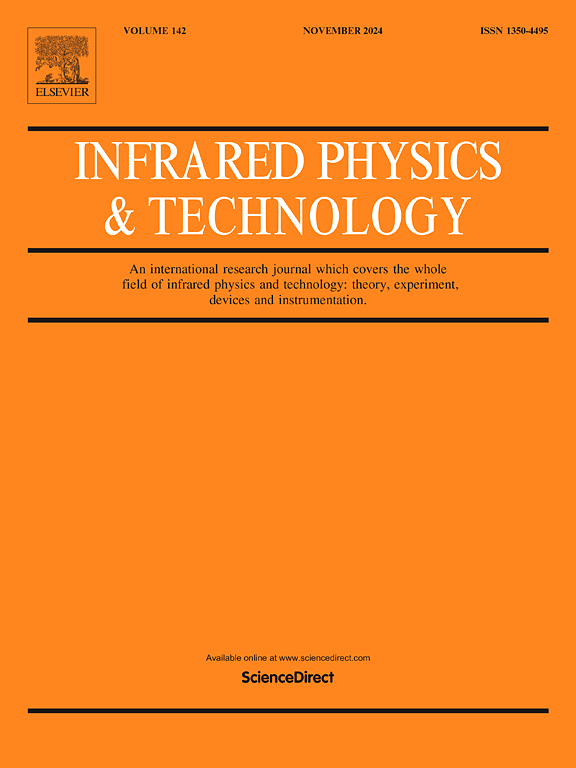Development of a rapid detection method for maize seed purity using a modular high-throughput near-infrared non-destructive testing system
IF 3.1
3区 物理与天体物理
Q2 INSTRUMENTS & INSTRUMENTATION
引用次数: 0
Abstract
The identification of maize seed varieties is crucial for ensuring high agricultural production quality, enhancing food security, regulating the seed market, advancing technological development, and supporting environmental sustainability. This study applied a high-throughput near-infrared detection system to identify various maize seed varieties. Using spectral data, different preprocessing methods and classification models were explored to construct a classification model for mixed-coated maize seeds (nine classifications). Results indicated that full-spectrum technology effectively distinguishes between mixed-coated varieties. Optimization with CARS and SPA algorithms identified the optimal model, SG-CARS-SPA-LR, which used 60 feature bands to achieve classification accuracies of 0.87 and 0.86 for calibration and test sets, respectively. Additionally, a three-class model for single-coated seeds was developed, enhancing the classifier’s generalization ability through feature selection and model optimization. Findings demonstrate that full-spectrum technology performs best for identifying varieties with the same coating type, especially uncoated seeds. The SG-CARS-SPA-LR model achieved exceptional classification accuracy (0.99) for both calibration and test sets using only 15 feature bands, underscoring this method’s efficiency and suitability for high-throughput seed analysis applications.
基于模块化高通量近红外无损检测系统的玉米种子纯度快速检测方法研究
玉米种子品种鉴定对于确保农业生产高质量、加强粮食安全、规范种子市场、促进技术发展和支持环境可持续性至关重要。本研究采用高通量近红外检测系统对玉米种子品种进行鉴定。利用光谱数据,探索了不同的预处理方法和分类模型,构建了混合包衣玉米种子的分类模型(9个分类)。结果表明,全光谱技术可有效区分混合包衣品种。利用CARS和SPA算法进行优化,确定了最优模型SG-CARS-SPA-LR,该模型使用60个特征波段,校准集和测试集的分类准确率分别为0.87和0.86。此外,建立了单包膜种子的三类模型,通过特征选择和模型优化增强了分类器的泛化能力。结果表明,全谱技术对具有相同包衣类型的品种,尤其是无包衣的品种鉴定效果最好。SG-CARS-SPA-LR模型仅使用15个特征波段就对校准集和测试集实现了出色的分类精度(0.99),强调了该方法的效率和高通量种子分析应用的适用性。
本文章由计算机程序翻译,如有差异,请以英文原文为准。
求助全文
约1分钟内获得全文
求助全文
来源期刊
CiteScore
5.70
自引率
12.10%
发文量
400
审稿时长
67 days
期刊介绍:
The Journal covers the entire field of infrared physics and technology: theory, experiment, application, devices and instrumentation. Infrared'' is defined as covering the near, mid and far infrared (terahertz) regions from 0.75um (750nm) to 1mm (300GHz.) Submissions in the 300GHz to 100GHz region may be accepted at the editors discretion if their content is relevant to shorter wavelengths. Submissions must be primarily concerned with and directly relevant to this spectral region.
Its core topics can be summarized as the generation, propagation and detection, of infrared radiation; the associated optics, materials and devices; and its use in all fields of science, industry, engineering and medicine.
Infrared techniques occur in many different fields, notably spectroscopy and interferometry; material characterization and processing; atmospheric physics, astronomy and space research. Scientific aspects include lasers, quantum optics, quantum electronics, image processing and semiconductor physics. Some important applications are medical diagnostics and treatment, industrial inspection and environmental monitoring.

 求助内容:
求助内容: 应助结果提醒方式:
应助结果提醒方式:


